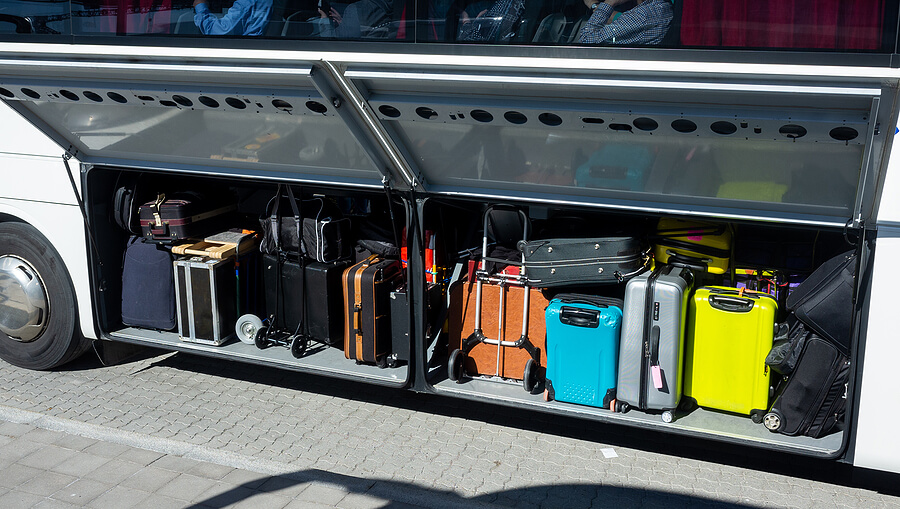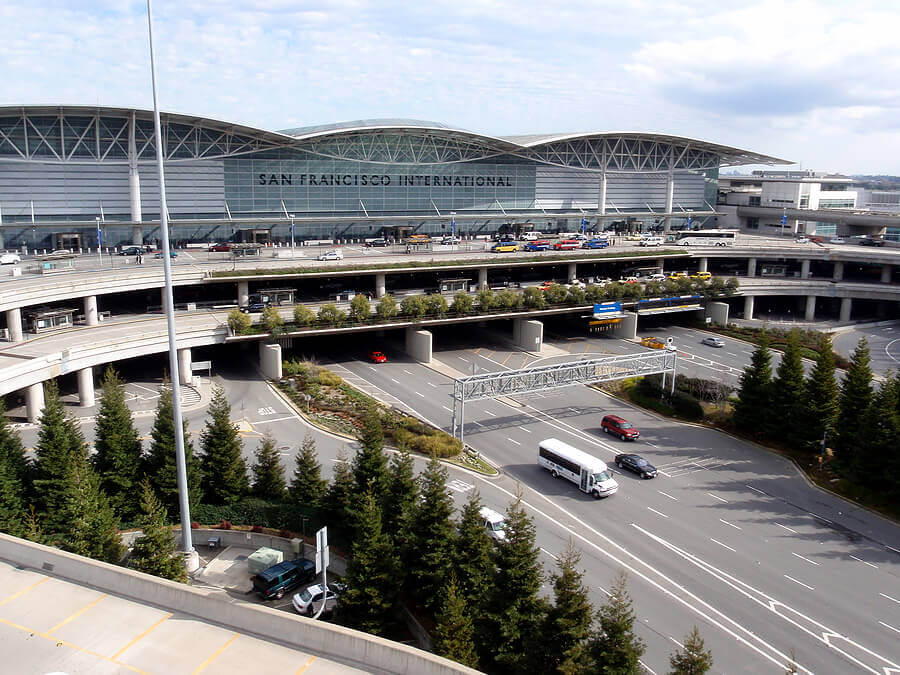Heading out on the open road with a big group can be an exciting adventure. Between jamming to your road trip playlist, playing games to pass the time, and watching the scenery roll by, hours spent on a charter bus with your nearest and dearest often fly by. But before those wheels start rolling, your group has some planning to do! While you’re busy finalizing your headcount, picking the perfect meetup spot, and packing snacks for the journey, you may not have given much thought to where your bus will park and load at each destination. Not to worry! We’ll help you to understand everything you need to know! Price 4 Limo is a bus company that has been in business for over 10 years and in this guide, we’ll share some of our industry knowledge so you'll be ready to hit the road like a pro. Whether you need a few pro tips for your upcoming trip or you’re totally new to the charter bus renting process, this complete guide will teach you charter bus parking basics so you can hit the highways without a hitch.

First, let’s understand some important terminology
When you start researching parking options for your charter bus, you may come across some industry lingo you’re not familiar with. Here’s a quick rundown of some key parking terms to know:
Staging
Staging refers to the short waiting period before a charter bus can pull into the loading zone and allow passengers to start boarding. At busy tourist attractions, event venues, and airports, multiple buses may need to use the same loading zone in a short time frame — however there might not be space for every single bus to load up simultaneously. So, buses will “stage” nearby until it’s their turn to load up passengers. This prevents traffic jams of idling buses at popular loading zones.
Loading/Unloading
The loading zone is where passengers actually embark and disembark the bus. Loading zones at busy locations often have short time limits of 5, 10, 15 or 30 minutes to keep traffic flowing smoothly. Since the clock is ticking, you’ll want to avoid keeping your charter bus waiting in the loading zone until all passengers are ready to board– if it’s early, then it might have to loop back around, and depending on the venue, this could back up your trip.

And you definitely want to get the timing right. We rented 5 motorcoaches to a museum in New Mexico, hosting a tour across the state. The loading zone was in front of one of the museums, but there was only room to load one bus at a time. The tour coordinator scheduled all the buses to show up one hour and thirty minutes earlier than the departure time to let each bus pull into the loading zone one by one, let passengers board, and carry on with the trip. This took approximately 10 minutes per bus, so this was enough time (with some spare!) to get going at the scheduled departure time.
Idling
Idling refers to when a vehicle is parked with the engine still running. There are often laws and regulations limiting how long charter buses can idle, usually 3-10 minutes depending on the location. At some destinations, idling may be prohibited altogether regardless of time. You just want to keep this in mind when planning your pick-up and drop-off locations.
Parking
You’ve booked the perfect charter bus for your group trip...but where will your bus park once you arrive? That’s an important logistical detail to confirm when visiting large attractions like convention centers, museums, theme parks, national parks, stadiums, and more. Parking charter buses takes some extra consideration. Standard spaces are obviously a no-go. Even "oversized" spaces may not be large enough. And charter buses are too tall for most parking garages. So what do you do? Well, many destinations may have a designated bus parking area. You will want to get in touch with your venue and ask them! Calling ahead helps you understand if parking is:
- - Onsite or offsite
- - Free or paid
- - Open parking or by permit
- - Adequate size for your bus
Knowing this lets you budget for parking fees and coordinate pickup/dropoff locations. If parking is offsite, your driver can drop your group off at the door then proceed to the parking area. They’ll reunite with you later for pickup.
Next, consider your destination
Have you heard the saying "When in Rome, do as the Romans do"? Well, when it comes to bus parking and loading, it's wise to remember the motto "When in New York City, do as New Yorkers do". In other words, every destination is different! What works for parking a bus in a small town might not fly in a major urban area.
Populous cities like NYC, Chicago, Seattle, and San Francisco have complex regulations, permitting processes, and restricted areas for large vehicles and tour buses. Meanwhile, smaller towns and rural destinations are usually more flexible. As an example, an out-of-towner may not realize that a historical district is off-limits to buses over 31 feet. Always disclose your full itinerary when booking so your provider can anticipate any location-specific logistics and assign the ideal driver.
If you are visiting a major city, check if there is a local Department of Transportation you can contact. Large cities often have these to assist with travel planning. They can inform you if you need any permits for your charter bus, provide maps of approved bus routes and loading zones, and share tips for parking.
When visiting convention centers, sports stadiums, airports, national parks, or other major attractions, call ahead to inquire about parking options for oversized vehicles like buses. Many larger facilities have designated bus parking areas, but space may be limited. Ask if reservations or fees are required. Knowing the parking situation in advance ensures your group trip goes smoothly from start to finish.
Planning a multi-attraction trip? Find the loading zones and staging areas ahead of time
Will your trip involve visits to multiple attractions within a city — or perhaps multiple days? Planning ahead for multiple stops is important. Since your bus will need to load and unload passengers at each destination, identify ahead of time where staging, loading zones, and parking areas are located. For example, if you’re visiting the National Mall then heading to the Smithsonian museums in D.C., pinpoint the approved loading zones at each stop. This prevents backups, as your driver won’t have to search for the right place. Print a map showing parking and loading areas for easy reference.
For attractions in close proximity, identify if walking between them is feasible. If so, have your driver drop off and pick up at one central spot. For destinations farther apart, plan the most efficient route between each stop. Account for traffic patterns and one-way streets. Coordinating multiple stops may sound complex, but thorough planning makes your trip smooth sailing.
How to Stage and Unload at Airports

Using a charter bus for airport transfers can make arriving for a group trip or heading home after a fun getaway seamless. But most major airports have specific rules on where buses can wait and load to prevent congestion. Rules vary by airport, but your driver will likely need to wait in a cellphone lot or offsite staging area until passengers have deplaned and are ready for pickup. Once notified, proceed to the airport’s designated loading zone for oversized buses. There is often a time limit for loading/unloading before the bus must depart so just be conscious of that — the best way is to text your driver when you are on the way down for pickup.
How to Park and Unload at Tourist Attractions
You're finally here! The excitement begins as your bus pulls up to that iconic national landmark or long-awaited theme park. But before the fun, your driver has to find a place to temporarily park. How exactly does that work? Well, it depends! The good news is that busy tourist sites are accustomed to visitors arriving in buses. They understand the need for efficient loading and parking. Many have official "Bus Visitor Centers" or designated group dropoff points. For the rest of the locations, you’ll have to do a little bit of planning ahead of time. Here’s some best best practices for different types of arrivals:
- For national parks, call the visitor center in advance to check that roads can accommodate buses, and to inquire about parking regulations. Rules vary by park.
- When visiting museums in busy urban areas, call to see if they offer any bus parking. If not, have your driver drop off passengers in the designated zone, then proceed to a parking garage or commercial lot nearby.
- At performance venues like concert halls and stadiums, look for bus parking lots onsite or nearby. Unload passengers at the venue’s group entrance.
- For attractions like zoos and theme parks, avoid peak days if possible. Check their website for guidelines on booking group visits and parking for large vehicles.
- When visiting multiple attractions in a city, identify centrally located drop-off/pickup zones to minimize bus movements.
- For national landmarks like the Gateway Arch in St. Louis, you should follow posted signage for bus loading zones.
How to Park at Hotels and Lodging Sites
Overnight trips require finding extended parking so your driver can properly rest between trip days. But don't assume your hotel has a ready spot! Always confirm bus parking when booking rooms. Ideally, look for hotels with large surface lots that can easily accommodate a bus. In urban areas, curbside street parking may be an option, but sometimes it’s prohibited. If there’s no parking on-site, search for nearby secure lots or garages with oversize spaces.
When arranging lodging, here’s some good questions to ask:
- Is bus parking available onsite, or is there an offsite lot/garage to use?
- Are there height or length restrictions for vehicles that can park there?
- Is the parking area secured?
- Is there a fee for parking, or do they offer complimentary bus parking?
- Are rooms available for your driver at a discounted rate?
Now You’re Ready To Hit the Road
We've covered a lot of ground on the critical logistics that keep bus trips running smoothly. From staging, loading, and parking in various environments to how to unload and more. These may seem like minor details, but advance planning pays off in keeping your group on schedule and stress-free! Now you're ready to sit back and enjoy the ride - you earned it!
When you’re ready to start your stress-free trip, the team at Price4Limo is ready to help! Our reservations team is always available 24/7 and can offer tips and advice for your itinerary as well as quotes. Call us anytime at 1-866-265-5479 to get started!